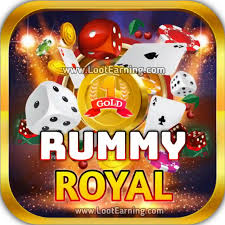Rummy Royal Rules, is an exciting variant of the traditional Rummy card game, offering a fresh and engaging twist for card game enthusiasts. Known for its strategic depth and dynamic gameplay, Rummy Royal introduces unique rules and features that distinguish it from other Rummy versions. This article provides a comprehensive overview of the rules and gameplay of Rummy Royal, helping both new and experienced players understand and enjoy this popular variant.
What is Rummy Royal?
Rummy Royal is a sophisticated version of the classic Rummy game, designed to enhance the traditional gameplay with additional rules and elements. It maintains the core objective of forming sets and sequences but introduces variations that add complexity and excitement to the game. Rummy Royal is typically played with a standard deck of 52 cards, often including jokers, and can accommodate 2 to 6 players.
Key Features of Rummy Royal
- Enhanced Gameplay:
- Rummy Royal incorporates advanced rules and strategies, making it suitable for players who enjoy a more challenging and nuanced version of Rummy.
- Jokers and Wild Cards:
- The use of jokers and special wild cards in Rummy Royal adds an extra layer of strategy, allowing players to substitute for other cards to complete sets and sequences.
- Scoring System:
- The scoring system in Rummy Royal is designed to reward strategic play and penalize mistakes, creating a competitive environment where every move counts.
Basic Rules and Gameplay
- Setup:
- Number of Players: Rummy Royal can be played with 2 to 6 players.
- Decks Used: The game typically uses one standard deck of 52 cards, with jokers included as wild cards.
- Dealing Cards: Each player is dealt a specific number of cards, usually 10 cards for 2-4 players or 7 cards for 5-6 players. The remaining cards form the draw pile, and one card is placed face-up to start the discard pile.
- Objective:
- The primary goal of Rummy Royal is to form valid sets and sequences with the cards in your hand. A set consists of three or four cards of the same rank but different suits, while a sequence consists of three or more consecutive cards of the same suit.
- Gameplay:
- Drawing and Discarding: On each turn, a player must draw a card from either the draw pile or the discard pile. After drawing, the player discards one card to the discard pile. The aim is to arrange the drawn card into sets or sequences and manage your hand effectively.
- Melding: To win the game or round, players need to meld their cards into valid sets and sequences. Players can lay down their melded cards on their turn if they have completed their sets and sequences.
- Declaring: When a player has successfully formed all their cards into sets and sequences, they can declare and end the round. The remaining players then reveal their hands and tally their points based on the cards left.
- Special Rules:
- Joker Usage: Jokers in Rummy Royal act as wild cards and can be used to substitute for any card to form sets or sequences. They can be particularly useful in completing difficult combinations.
- Royal Flush Rule: Some variations of Rummy Royal include a “Royal Flush” rule, where forming a specific sequence or set of cards grants bonus points or additional advantages.
- Penalty for Unmelded Cards: If a player declares but has unmelded cards remaining in their hand, they receive a penalty based on the total value of those cards. This encourages players to strategize carefully and avoid holding onto high-value cards.
- Scoring:
- Card Values: In Rummy Royal, numbered cards are worth their face value, face cards (Kings, Queens, Jacks) are worth 10 points each, and Aces can be worth either 1 or 11 points, depending on the variant.
- Winning: The player who melds all their cards first and declares wins the round. The remaining players calculate their points based on the cards left in their hands. The player with the lowest score at the end of the game, played over multiple rounds, is declared the overall winner.
Advanced Strategies
- Effective Use of Jokers:
- Use jokers strategically to complete difficult sets or sequences. Holding onto a joker for too long can be risky, so aim to use it as soon as it helps you achieve a meld.
- Discarding Wisely:
- Pay attention to the cards your opponents are discarding and avoid holding onto high-value cards that could increase your penalty if an opponent declares first.
- Optimal Declaration Timing:
- Determine the best time to declare based on your hand and the state of the game. Declaring too early may leave you with unmelded cards, while waiting too long can increase the risk of opponents declaring first.
Conclusion
Rummy Royal offers an engaging and strategic variation of the classic Rummy game, incorporating unique rules and features that enhance the traditional gameplay experience. By understanding the basic rules, special rules, and advanced strategies, players can enjoy a challenging and rewarding game of Rummy Royal. Whether playing casually with friends or in a competitive setting, Rummy Royal provides a sophisticated twist on a timeless classic, ensuring hours of entertainment and excitement.




